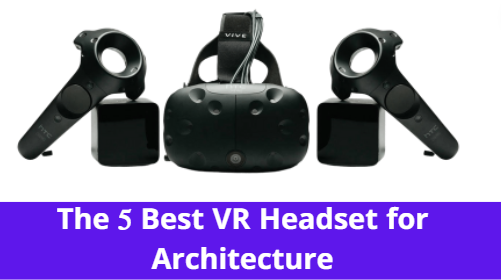If you want to see your designs in 3D, you may be wondering which best VR headset for architecture. Although their features and capabilities differ, there are some common characteristics to look for when selecting the best one for your needs.
Here are the top five best VR headsets for architecture to consider, as well as the advantages they have over other VR headsets on the market today.
Products | Features | Rating | Price |
1.Oculus Rift S VR Gaming Headset |
| ||
2 .DESTEK V5 Virtual Reality Headset |
| ||
3 . VR SHINECON-Virtual Reality Headset |
| ||
4 .PVR Headset Virtual Reality Headset 3D |
| ||
5 .Voxkin Virtual Reality Headset 3D VR Glasses |
| ||
Considerations before Buying a VR Headset for Architecture
1. Set Aside Money For Hardware And Software.
In our experience, most SMBs begin their VR implementation by purchasing 1-2 headsets for their design teams. It allows them to test their business workflows before implementing technology across all projects and teams
Are you going to start with a small scale and then scale up? Or are you planning a deployment at the enterprise level? How will you manage software deployment and user management for a large number of users? This is an important question to consider what the best VR headset is for architecture is.
For enterprise features, hardware costs may vary. For example, the consumer ($299) and enterprise ($799) editions of Oculus Quest 2 have different price points.
The price of software typically rises as the number of users on the platform grows.
Our advice is to conduct a pilot test on a limited budget. To put your company’s ideal VR presentation workflow to the test. By purchasing a pair of Oculus Quest 2 headsets for $299 each. In 1-to 2 months, you will be able to assess the benefits of using virtual reality. This will allow your company to plan a budget. In the future, there will be more headsets and teams.
2. If Need a Tethered or Wireless VR System
The ability to process heavier models is the main advantage of a tethered VR headset. A good benchmark is more than 1 million polygons. We recommend going this route if this is a critical factor for your business requirements.
The models are typically heavier, especially for Revit users, and Windows PCs meet the requirements for a compatible headset. A standalone VR headset, on the other hand, is the best option if you prefer a more mobile and flexible VR implementation.
While you may be limited in your ability to work with heavier models as a result of this. There are ways to take advantage of the headset’s increased PC power. Like Oculus Quest 2, you can improve the ability to handle larger models by using the Airlink option.
According to the IDC report, standalone VR headsets accounted for 82.7 percent of the headset market in the first quarter of 2021. In the future, it is expected that the focus and shift of VR headsets will shift to this segment. This is an important factor to consider before purchasing headsets for your business.
The Best Virtual Reality Headsets for Architecture in 2022
Architects have been able to see and experience their designs before they were since the dawn of 3D modeling, but VR takes it a step further by immersing you in your digital building as if you were there. If you work in architecture, these are the best VR headset for architecture.
1-HTC Vive Pro
HTC Vive Pro
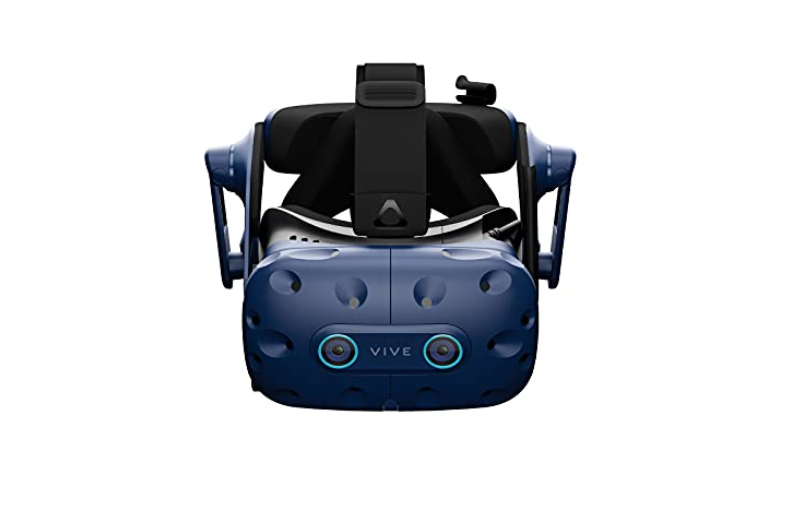
Key Features
- 13.7 x 13.6 x 7.7 inches in size
- 6.05-pound weight
- Video Game That Is Compelling
- 4 Lithium Polymer Batteries
Pros
- Fantastic virtual reality experience.
- Simple to use.
- Appealing Software collaborations.
Cons
- Requires a powerful PC to run.
The HTC VIVE requires a powerful desktop GPU to function, but the result is the ability to create immersive, active VR. The ability to move around in space is a huge benefit (a minimum of 2×1.5m is recommended by HTC). It works by using two sensors in the room’s corner that sweep lasers to track the headset’s location.
The VIVE includes two handheld controllers, allowing for more menus, navigation, and gesture recognition options. The headset also has a front-facing camera, allowing designers to incorporate real-world elements into games and experiences. If you think you’ll need something even more powerful, the HTC Vive Pro with dual OLEDs is a good option.
2-HP Reverb G2
HP Reverb G2
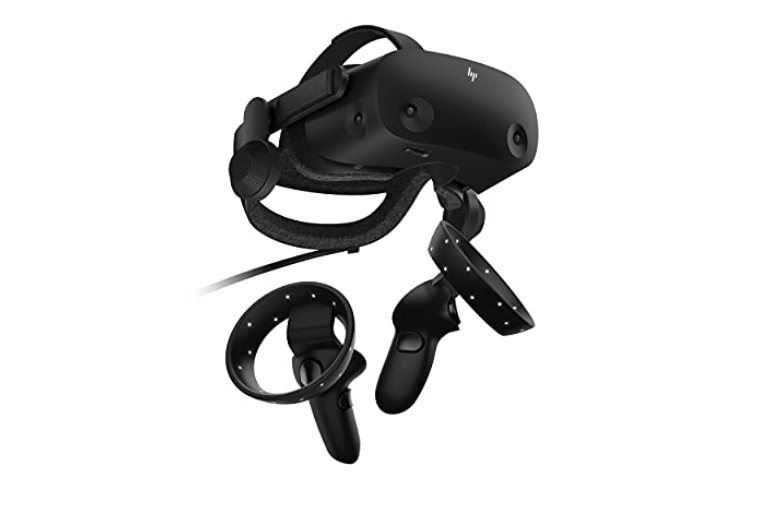
Key Features:
- Resolution of 2160 x 2160 pixels
- 7.32 x 3.31 x 2.95 inches in size
- 1.1-pound weight
- 4 cameras built-in
Pros
- There are no base stations.
- Simple to set up.
- Tether with a long length.
- IPD slider on a physical level.
Cons
- The amount of tracking data available is few.
The HP Reverb G2 VR headset‘s main selling point is its ultra-high resolution. With a resolution of 2160p per eye, it eliminates the screen-door effect that plagues many of its lower resolution competitors. The caveat is that you’ll need a PC that can run VR games at 4K without stuttering your frame rates too much. It’s not only nauseating and annoying to play virtual reality games with frame jitter, but it’s also dangerous.
3-Oculus Rift S
Oculus Rift S
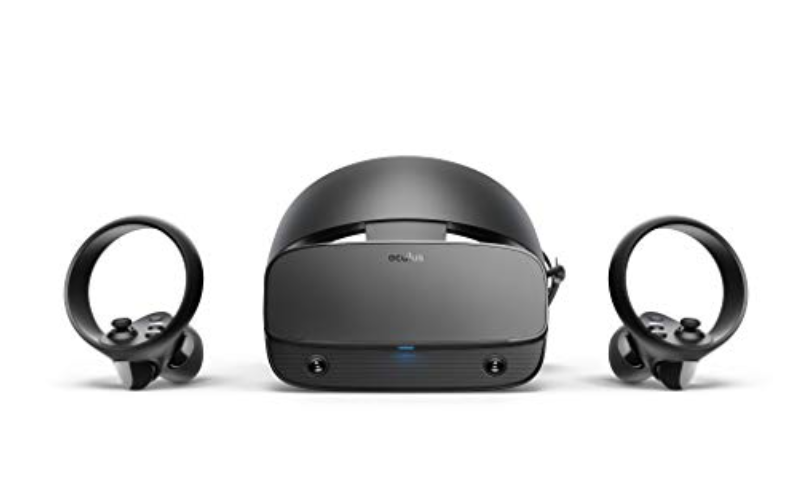
Key Features:
- 10.94 x 6.3 x 8.27 inch dimensions
- 2.31-pound weight
- There are four AA batteries included.
- 7-inch screen
- 1000 Fields Of View
Pros
- Fewer ports are necessary than the Rift.
- Excellent accuracy and tracking.
- A large number of apps are available.
Cons
- A slower rate of refresh.
The Oculus Rift S VR headset, which is a refresh of the original Oculus Rift, was an issue in April 2020. This updated model has undergone some significant improvements, with the excellent Insight tracking system standing out. It also uses a lot fewer PC resources in terms of port usage. The materials used to construct the headset are also well-considered, feel durable, and are pleasant to the touch.
While the overall experience has improved, the screens themselves, which are the most important part of any head-mounted display, appear to have taken a back seat. While they aren’t necessarily worse than their predecessors, they don’t appear to have made the expected progress (like the Oculus Rift 2). If you’re looking for a good deal, however, it’s still a great, low-cost VR headset.
4- Valve Index
Valve Index
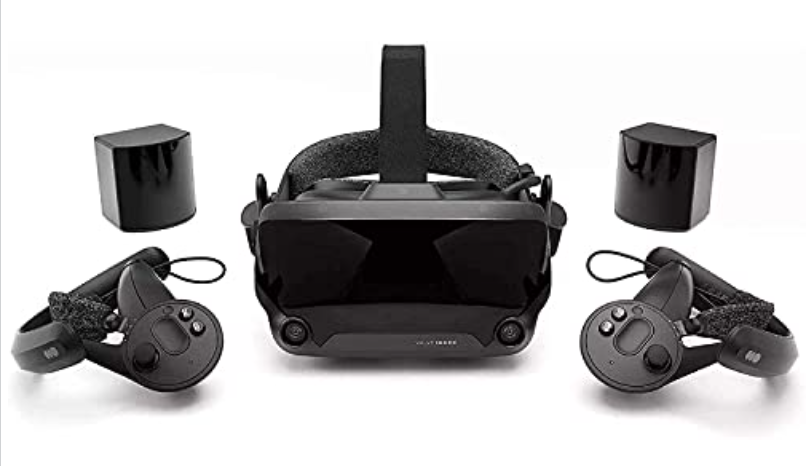
Key Features:
- 23.5 x 17 x 9 inches in size
- Binding Electronics
- 16-pound weight
- 1 set of Lithium-ion batteries
Pros
- Excellent high-resolution display.
- Controllers with knuckles.
- A large field of vision.
Cons
- Tethered to a computer
The Valve Index is still one of the best VR headsets money can buy more than two years after its release. To use this, you’ll need to be connected to your PC, but don’t worry about power consumption; the Valve Index has a good track record with older GPUs. The field of view and refresh rate are comparable to some of the more expensive hardware available.
The high-resolution display looks fantastic, and the Index’s ‘knuckle’ controllers provide excellent interactivity. Those who aren’t used to traditional VR controllers may find these to be a better fit.
What’s the catch? Such power, after all, isn’t cheap. This is an excellent VR kit for those who want to use it at home and want high-end hardware.
5. Playstation VR
Playstation VR
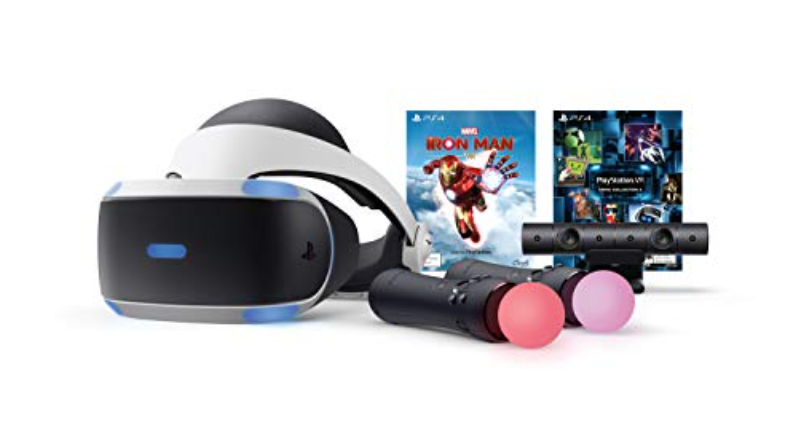
Key Features:
- 16.3 x 10.5 x 8.3” dimensions
- Video Game That Is Compelling
- 7.3-pound weight
- 1 set of Lithium-ion batterie
Pros
- Cheaper than the majority
- Gamers will love it.The setup
- is simple.
Cons
- A small amount of light bleeding.
The PlayStation VR is another affordable option aimed specifically at console gamers. Rather than an expensive PC gaming rig, this headset is connected to a PlayStation 4 console. If you already own a PS4 or PS5, this makes it the obvious first step into VR gaming.
The drawback is that there will be less power and, as a result, less immersion. The PlayStation Camera tracks nine-light points on the headset, allowing for room-scale VR. But tracking isn’t as good as on the HTC Vive due to Sony’s decision to use one sensor instead of two.
Although PlayStation VR content is currently focused on gaming. The headset’s massive sales figures make it a serious mass-market proposition. If you already own a PlayStation and aren’t convinced about virtual reality. This model is a good way to start.
What Types Of 3D Content Do You Plan To Showcase In Virtual Reality?
Content related to architecture and 3D design can be divided into two categories:
1-Renders from Rendering Software Such As Enscape, Lumion, V-Ray, Twinmotion, and Others Were Used to Create 1-360 Panoramas
Because the files are images, the size of the files isn’t an issue in this case. We recommend the Oculus Quest 2 as the best headset for client presentations. By using 360 tour software, you can get the benefits of cost and mobility. While ensuring that you can show clients the designs in high quality during meetings.
2- Models from Sketchup and Revit Are used to Create 3D Walkthroughs
In this case, the file size may be a deciding factor in your headset selection. Because the headsets are there for a powerful Windows PC. You can use them to review heavy models with a PC-tethered VR headset like the HP Reverb G2.
However, we still recommend that you use the Oculus Quest 2 as your primary headset. While most 3D to VR software sets a polygon size limit (ranging from 200K to 1M polygons). It’s for rendering on a standalone headset like the Oculus Quest 2 because of its limited processing power. The ability to use PC power via Airlink has bolstered the case for Oculus Quest 2.
Conclusion
Architects and designers have a plethora of visual applications at their disposal to assist them in rendering the interior and exterior spaces of their clients’ projects in 3D, but these programs lack the sense of scale and perspective that virtual reality can bring to an architectural workspace. That’s why, before building anything on-site, architects are increasingly using virtual reality headsets like the Oculus Rift, HTC Vive, and PlayStation VR to help them visualize their designs and ensure they’re structurally sound. These are the best VR headsets for architecture professionals if you work in the field of architecture. Consider your budget, mobility, and model complexity before making a final decision if you’re working with 3D models.
Frequently Asked Questions
Q: Do architects use virtual reality?
A: 9 of the top 20 architectural firms in the world use virtual reality in test cases or their daily operations, and 83 percent of the top 100 firms use Enscape for virtual reality architecture rendering. Your clients will be astounded by an architectural virtual reality experience.
Q: What is virtual architecture?
A: The term “virtual architecture” refers to an electronic representation of a building’s design. The phenomenon of virtual architecture can serve two purposes: it can be used to simulate physical architecture or it can be used to create a functional virtual environment. The most common purpose of virtual architecture is to simulate physical architecture.
Q: What role does virtual reality play in architecture?
A: It is easier to communicate design intent clearly when the immersive sensation of actually being inside a building is provided. When clients can’t grasp spatial relationships and scale from a 2D rendering, virtual reality (VR) can elicit a positive response in the same way that physical architecture can.
Q: What does architecture have in store for the future?
A: The architectural design process is being changed by immersive technology. Architects can now get a sense of a design before it is constructed. Virtual reality technology has already changed the architectural, engineering, and construction industries. Virtual reality is a huge step forward for projects in the conceptual stage.
Q: How does immersive architecture work?
A: Immersive architecture provides a unique service that no other technology currently provides. Clients can immerse themselves in a virtual reality simulation of an architect’s design. They can get a better understanding of the end product by using their eyes and ears in a 3D space.
